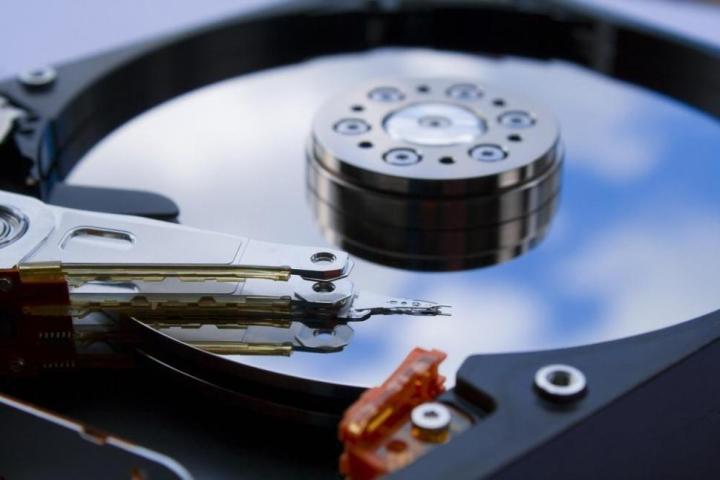
This holds true for storage as well, with today’s hard drives boasting a far greater storage capacity than those released even a few years ago. In 2005, a 1TB hard drive was the dream. Today, 4TB seems routine. In 2015, the storage industry is in a state of flux, as manufacturers seek to keep capacities climbing higher without sacrificing performance. Hard drives can hold more data than ever, and here are five of the biggest.
Samsung PM1633a 16TB (Price not yet announced)
This one may be cheating, as it hasn’t actually come out yet. First revealed in August, Samsung’s new drive is too impressive not to mention. The PM1633a is Samsung’s latest solid state drive, and it represents a massive leap from the SSDs of yesterday.
Despite its bland name, this beast has 16TB of storage, far surpassing the 8TB hard drives that clutter the top shelf. The PM1633a’s massive size is a result of Samsung’s 3D NAND die setup, which consists of longer layers of memory cells folded over so that more can be fit in. This allows for a significant increase in cells over previous models, in which cell layers were simply laid out flat.
The whole system will fit in a 2.5 inch case, the standard for SSDs. The new drive promises a 30 percent reduction in energy consumption from Samsung’s previous model. Samsung has not yet announced a price nor a release date for the PM1633a. Barring a shocking development between now and its release, it will undoubtedly be the highest capacity hard drive on the market.
HGST Ultrastar Archive Ha10 10TB

At 10 TB, the Ha10 is the flagship of HGST’s Ultrastar line. Uniquely, the Ultrastar drives have helium sealed in the case. Helium, being thinner than air, reduces the wind resistance on the drive’s discs as they spin. This results in faster performance and less energy consumption.
The Ha10 uses an additional innovation, shingled magnetic recording (SMR), to increase the amount of storage space available. Whereas in a traditional hard drive, the tracks on a disc are perpendicular to each other, in an SMR setup they overlap like the shingles on a roof. In doing so, manufacturers are able to fit more tracks in. This increased density means greater storage space, though at a price. Because the tracks overlap, data must be written to each one, resulting in slower write speeds.
While the helium keeps the discs spinning easily, the Ha10 has a noticeable decrease in write speed (157 megabytes per second) compared to parallel track devices. As such, it is intended more for archival purposes, storing massive amounts of data that users might not need to edit regularly.
Seagate Archive 8TB ($250)

Like HGST’s Ha10, Seagate’s 8TB hard drive uses SMR to increase the amount of storage available at the cost of writing speed. Also like the Ha10, Seagate’s 8TB is intended for archival purposes, designed as a massive “cold storage” device. Unlike HGST, Seagate does not use helium in the drive. This keeps the cost down, but also the performance. The Archive HDD is one of the largest drives on the market thanks to the SMR structure. It is a great option for those who want a relatively cheap way to store huge amounts of digital media.
HGST Ultrastar He8 8TB ($480)

The second banana in the Ultrastar lineup is still more impressive than many of its competitors. The He8, like HGST’s other hard drives, uses helium to reduce friction on the discs, dramatically reducing the energy usage of the drive. In fact, HGST boasts that the He8 uses 23 percent less operational power than typical 6TB drives which forgo helium. While it has smaller capacity than the Ha10, the He8 is faster with a sustained transfer rate of 205 megabytes per second.
WD Black 6TB ($300)

Western Digital’s “Black” line is known for excellent performance, and this 6TB model is a sterling example. The 6TB Black hard drive is not the most prodigious hard drive, but it is faster than some of its larger competitors, with a transfer rate of 218 megabytes per second. It’s also a good deal cheaper than most of them. This drive eschews the shingled memory arrangement of larger HDD’s, preserving speed and making for a better general use hard drive.



